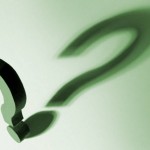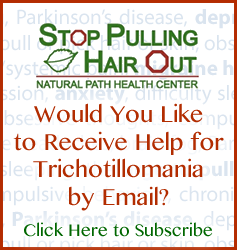 A search of the internet for ‘trichotillomania treatment’ brings back over 149,000 results. This can make the search for a viable trichotillomania treatment option very difficult, if not downright impossible. However, upon closer investigation, you will find that there are really only a few trichotillomania treatments that have any scientific evidence behind them, although even within this select group of therapies, results are highly individualized.
A search of the internet for ‘trichotillomania treatment’ brings back over 149,000 results. This can make the search for a viable trichotillomania treatment option very difficult, if not downright impossible. However, upon closer investigation, you will find that there are really only a few trichotillomania treatments that have any scientific evidence behind them, although even within this select group of therapies, results are highly individualized.
Trichotillomania treatments
Cognitive Behavioral Therapy (CBT): Cognitive behavior therapy attempts to alter behavior by identifying environmental factors that trigger hair pulling (or biting or skin picking) and then helping a person learn skills to interrupt and redirect their responses to those triggers. Used over time, the new behavior replaces the old (i.e., pulling). CBT should be performed by a therapist trained in this method, ideally with experience in the treatment of trichotillomania. Certain methods of CBT such as Habit-Reversal Training and the Comprehensive Model for Behavioral Treatment of Trichotillomania have shown to be the most successful CBT treatments for trichotillomania, so be sure to ask your provider if they use or have been trained in these therapies. We have found CBT to be most successful once a person has achieved proper neurotransmitter function via amino acid therapy (see below).
Medications: many medications have been tried as a treatment for trichotillomania. Unfortunately, the results have been disappointing (see other posts on this site for more information on drug treatments for trichotillomania). That said, some people do benefit from drug therapies, either alone or in conjunction with cognitive-behavior therapy or amino acid therapy. The effect, however, is almost always temporary because drug therapies cannot address the underlying cause of trichotillomania in most people.
In addition, the use of medications for the treatment of trichotillomania in children or adolescents brings additional concerns. Very few drug trials involve children and to date there have been no studies of the use of medication for the treatment of trichotillomania in children. Due to the limited evidence supporting these medications effectiveness, as well as concerns about the long-term effects of medications on the developing brain, several groups, including the Trichotillomania Learning Center’s Scientific Advisory Board have advised that “for most children and adolescents with trichotillomania, medications should not be used as a treatment of first choice.”
Amino acid therapy: Amino acid therapy involves providing the body the nutrients it needs to optimize neurotransmitter balance in the body. One of the main underlying causes of trichotillomania for many people is an imbalance in one or more neurotransmitters. The ONLY way to correct this for the long term is to supply the body the amino acids and co-factors it needs to restore proper neurotransmitter balance, which will eliminate the urge to pull, allowing you to stop pulling. Once the urge to pull is gone, other therapies, like Cognitive Behavior Therapy are much more effective as a treatment for trichotillomania in order to address any remaining behavioral and/or habitual triggers to pull.
It can be a confusing and frustrating experience for people searching for trichotillomania treatments. However, after looking at the scientific and clinical evidence, only two have shown reproducible results – cognitive behavioral therapy and amino acid therapy – for people with trichotillomania.

